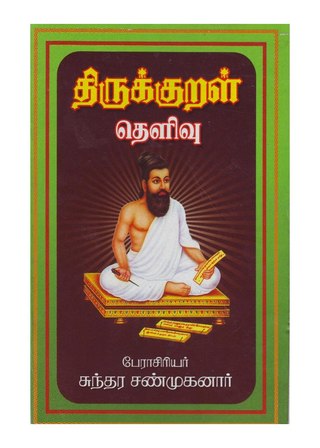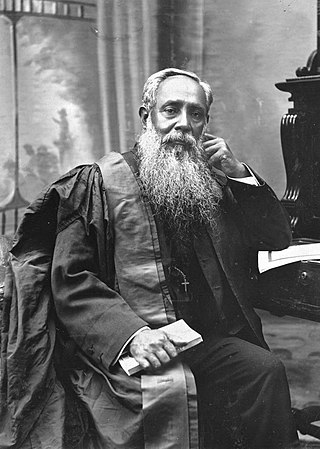| Part of a series on |
| Translation |
|---|
 |
| Types |
| Theory |
| Technologies |
| Localization |
| Institutional |
| Related topics |
|
Kannada has at least eight translations of the Tirukkural available as of 2014. Both prose and verse translations have been made in Kannada.
| Part of a series on |
| Translation |
|---|
 |
| Types |
| Theory |
| Technologies |
| Localization |
| Institutional |
| Related topics |
|
Kannada has at least eight translations of the Tirukkural available as of 2014. Both prose and verse translations have been made in Kannada.
The first Kannada translation of the Kural text was made by Rao Bahadur R. Narasimhachar around 1910, who translated select couplets into Kannada. It was published under the title Nitimanjari, in which he had translated 38 chapters from the Kural, including 28 chapters from the Book of Virtue and 10 chapters from the Book of Polity. [1] The second translation was made by B. M. Srikanthaiah in 1940, who published it under the title 'Kural' as part of his anthology, Tamil Kattu (Kannada rendering in verse of various Tamil classical works). [2] : 680 Unfortunately, the entire manuscript was destroyed by white ants. [1] The next translation was made by L. Gundappa in 1955, who then translated only the first book of the text, viz., Book of Virtue, and published under the title Tirukkural: Dharma Bhaaga. It was published under the auspices of the Southern Languages Book Trust. [1] In 1960, Gundappa published a complete translated version of the text, covering all the three sections. In 1982, P. S. Srinivas, then head of the Department of Kannada at the Madurai Kamaraj University, published the entire work in prose along with the original Tamil text. The next translation was by N. Munusamy, which was published in 1985. [2] In 2001, K. Jayaraman translated the work in prose, which was published by Bharati Publications, Mysore. In 2014, another translation of the text was completed by S. Srinivasan, which was published by the Central Institute of Classical Tamil (CICT) in Chennai. [3] [4] The translation was part of CICT's project of translating the Kural into multiple languages including Telugu, Manipuri, Nepali, Punjabi and other Indian languages. [5]
| Translation | Chapter 26, ಮಾಂಸ ಉಣದಿರುವುದು/ಮಾಂಸ ತ್ಯಾಜ್ಯ | |
|---|---|---|
| Kural 254 (Couplet 26:4) | Kural 258 (Couplet 26:8) | |
| P. S. Srinivas, 1982 | ಕರುಣೆ ಯಾವುದೆಂದರೆ ಒಂದು ಪ್ರಾಣಿಯನ್ನು ಕೊಲ್ಲದಿರುವುದು; ಕರುಣೆಯಲ್ಲದ್ದು ಯಾವುದೆಂದರೆ-ಕೊಲ್ಲುವುದು. ಆ ಕೊಂದ ಒಡಲಿನ ಮಾಂಸವನ್ನು ತಿನ್ನುವುದು ಧರ್ಮವಲ್ಲದ್ದು. | ದೋಷಮುಕ್ತವಾದ ಅರಿವುಳ್ಳವರು ಒಂದು ಪ್ರಾಣಿಯ ಒಡಲಿಂದ ಹರಿದು ಬಂದ ಮಾಂಸವನ್ನು ತಿನ್ನುವುದಿಲ್ಲ. |
| S. Srinivasan, 2014 | ಅಧರ್ಮವೆಂಬರು ಜೀವ ಹತ್ಯೆಯ; ಕೊಲಲಿಲ್ಲವೆಂದು ಪೇಳಿ ಭಕ್ಷಿಸಿಡೆ ಮಾಂಸವ ಮೇಲೂ ಅಧರ್ಮವಲ್ಲವೆ. | ಪಿರಿಯ ಉಣರೆಂದೂ ಅರಿತಿರೆ ಅದು ತಲೆ ತೆಗೆದ ಕುರಿಯ ಅಂಶವೆಂದು. |

The Central Institute of Classical Tamil (CICT) is a body established by the Government of India with a view to promoting the cause of Classical Tamil. It is located in Chennai.

The Tirukkuṟaḷ, or shortly theKural, is a classic Tamil language text consisting of 1,330 short couplets, or kurals, of seven words each. The text is divided into three books with aphoristic teachings on virtue (aram), wealth (porul) and love (inbam), respectively. Considered one of the greatest works ever written on ethics and morality, it is widely acknowledged for its universality and secular nature. Its authorship is traditionally attributed to Valluvar, also known in full as Thiruvalluvar. The text has been dated variously from 300 BCE to 5th century CE. The traditional accounts describe it as the last work of the third Sangam, but linguistic analysis suggests a later date of 450 to 500 CE and that it was composed after the Sangam period.
Tirukkural, also known as the Kural, an ancient Indian treatise on the ethics and morality of the commoner, is one of the most widely translated non-religious works in the world. Authored by the ancient Tamil poet-philosopher Thiruvalluvar, it has been translated into at least 42 world languages, with about 57 different renderings in the English language alone.
William Henry Drew was a 19th-century Christian missionary to India who rendered the Tirukkural into English. However, he translated only the first 630 couplets of the Tirukkural.

John Lazarus (1845–1925) was a Christian missionary to India who rendered the Tirukkural into English. He revised the work of his predecessor William Henry Drew, who had already translated the first 63 chapters of the Tirukkural, and translated the remaining portion of the Kural text.

Tirukkural remains one of the most widely translated non-religious works in the world. As of 2014, there were at least 57 versions available in the English language alone. English, thus, continues to remain the language with most number of translations available of the Kural text.
Hindi perhaps has many translations of the Tirukkural. As of 2000, there were at least 19 translations of the Kural text available in Hindi. Many of these translations are in verse form.
As of 2020, there were at least four translations of the Tirukkural available in Arabic. The Kural text is the first, and so far the only, Tamil work to be translated directly into Arabic. It is also the first Tamil work to be released in the Arabian soil.
Malayalam has seen the most number of Tirukkural translations than that of any other language in India. As of 2007, there are at least 21 translations of the Kural text available in Malayalam. Malayalam also has the distinction of producing the first ever translation of the Kural text among the languages in India and the world at large. The Annual Report of the Cochin Archeological Department for the year 1933–34 reported an unpublished manuscript of a Malayalam translation of the Tirukkural made in 1595.
Telugu is one of the Indian languages that has had the earliest Tirukkural translations in modern times. As of 2000, there were at least 14 translations of the Kural text available in Telugu.
As of 2015, there were at least three Gujarati translations available of the Tirukkural.
As of 2015, Tirukkural has been translated into Punjabi at least twice.
Herbert Arthur Popley was a Christian missionary of London Mission, Erode, known for his literary work as a translator of the Tirukkural and his skill in rendering Tamil Christian music in the Carnatic style. He was secretary of the All-India Y.M.C.A. At the time of his death, he was president of the local Y.M.C.A. and a director of the Coonoor Co-operative Urban Bank Ltd. He died in Coonoor on 9 May 1960 at the age of 81.
S. M. Michael was one of the early 20th-century translators of the Tirukkural into English.
A. Chakravarti, who served the Indian Educational Service (IES), was a professor of philosophy at the Presidency College in Chennai, India. He is known for translating the Tirukkural into English.
G. Vanmikanathan, better known as G. V. Pillai, was a Tamil scholar, author, founder and organiser of the 'Tirukkural Prachar Sangh'. He is known for translating the Tirukkural into English.
P. S. Sundaram (1910–1998), born Pazmarneri Subrahmanya Sundaram, was an Indian professor of English, best known for translating the Tirukkural and various Tamil classics into English. He had degrees in English from the University of Madras and the Oxford University. He served as professor of English for about 40 years in different parts of North India.
Soibam Rebika Devi is an Indian translator who is best known for translating the Tirukkural into Meitei.
S. Srinivasan is an Indian civil engineer, who is best known for translating the Tirukkural into Kannada.
Tarlochan Singh Bedi is an academician better known for translating the Kural into Punjabi.